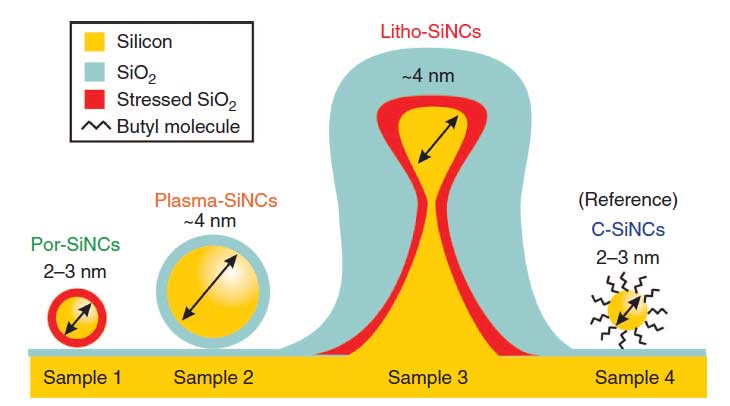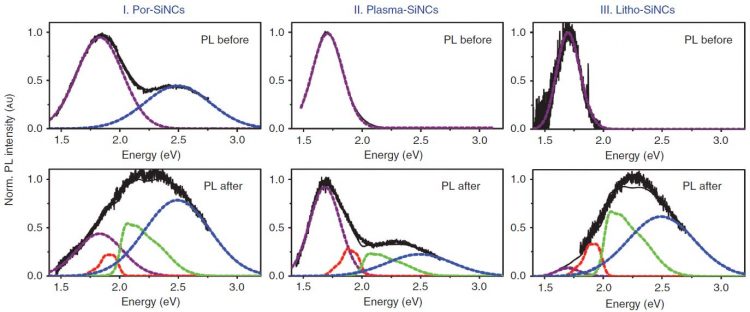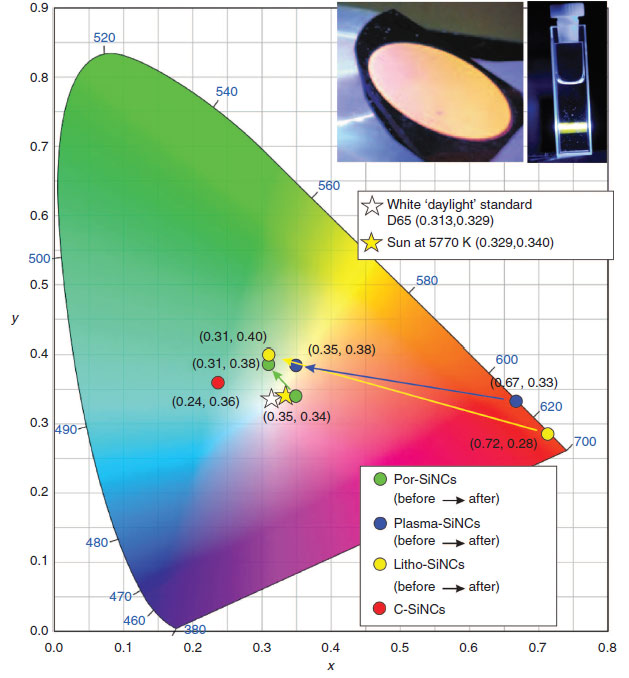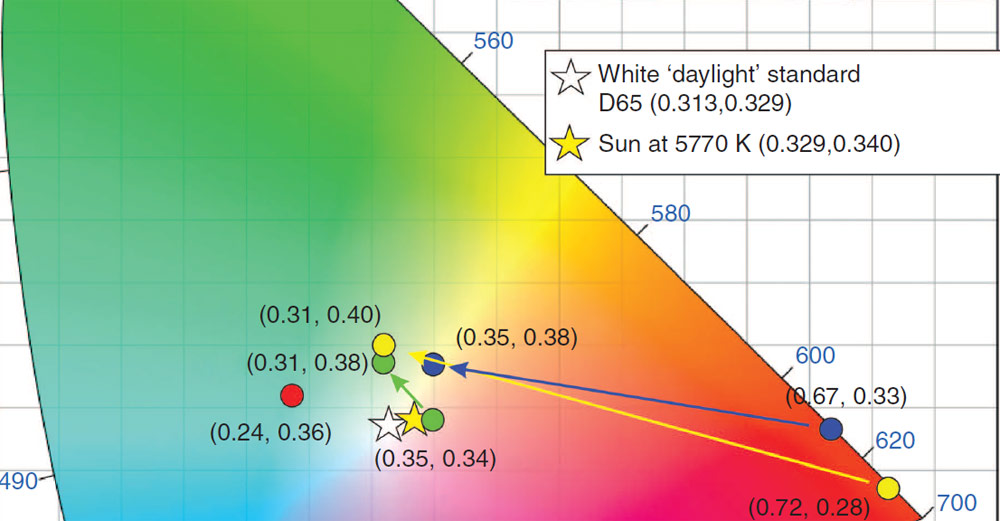Silicon nanocrystals have great potential as environmental friendly quantum-dot alternative for applications in medical imaging, lighting and displays. They exhibit excellent photostability, non-toxicity and abundant resources, but their inefficient and narrow light emission due to the indirect band gap of silicon seriously limits their applications.
In collaboration with the group of K. Newell, we demonstrate a new method to convert silicon nanocrystals into an efficient and robust multi-chromatic phosphor. Using electron-beam irradiation of oxide-capped SiNCs, we introduce several types of color centers into the nanocrystal’s oxide shell, resulting in efficient blue, green and red emission, which together yield warm-white photoluminescence, even from a single SiNC. Read our paper in Light.
The different silicon nanocrystal samples of our study are shown in Fig. 1 below. They differ in size and preparation method. The color centers are introduced into the oxide shell by mild (2–30 keV) e-beam irradiation, where they become optically excitable in the blue spectral range, due to the small band gap of the SiNC core. These color centers lead to new emission bands that are not naturally occurring in O-SiNCs and are stable in air.
Photoluminescence spectra show the appearance of new emissive channels in Fig. 2. Before irradiation (top row), the PL spectra are rather narrow and located at rather low energy (red color), while after irradiation (bottom row), new emission sub-bands appear, resulting in an overall broad emission spectrum with warm white color. These emission bands, particularly including the
missing green band, have similar brightness throughout the whole
visible range, turning the treated SiNCs into a well-equilibrated
multi-chromatic emitter. The spectral changes are illustrated in the color gamut in Fig. 3. A large change from the red side to the white center of the gamut is observed for samples 2 and 3. The resulting warm-white emitters could find applications in lighting and displays.



